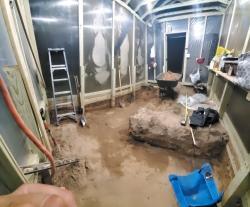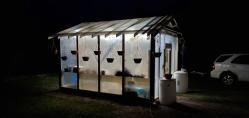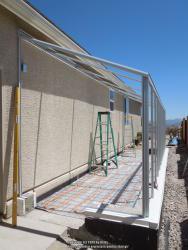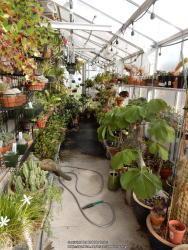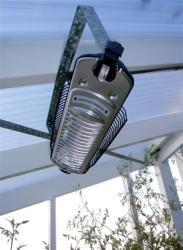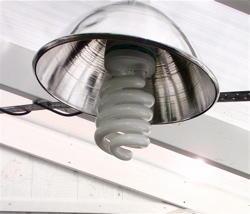Living in the mountains at 7600 ft/2300 m, I decided to build a four-season greenhouse that would collect and store sufficient heat to winter tomatoes and such.
I began by digging out a 1 meter hole, then pouring footers and using foam-insulated forms for the walls of the foundation. The base was 2-inch foamboard covered with Reflectix roll insulation. It was filled halfway with pea gravel and then with a layer of coarse sand. I laid drainage pipes, but no water has ever drained.
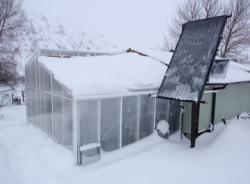
It was partly framed using lumber from the shed that I tore down to clear the spot. The roof is 6-wall poly (R 3.8) and the sides are 3-wall. The flate plate solar collector was salvaged and fixed. It's plumbed with PEX tubing, charged with a 50% glycol solution (it gets down to -40° here) with a PEX coil through a 400 gallon stock tank, filled with water, under the floor. The collector loop is pumped with a Laing EcoCirc DC pump driven by a 20W PV panel set at the same angle as the flat plate collector. When there's not enough sun to heat the solution, the pump shuts down.
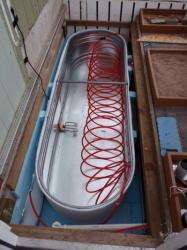
The water in the stock tank is circulated with a Taco AC fishpond pump through a maze of PEX tubing in the floor. It was then filled to grade with coarse sand. Even in the coldest weather the floor maintains about 55-60°F, which helps to heat the inside air.

Beds were framed with recycled plastic lumber and I added black brick pavers in between. Above the heatsink, the floor is chipboard covered with black rubber shop mats.
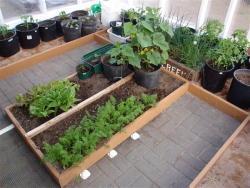
The other passive elements are four black plastic wall tanks, which absorb solar heat and radiate about 8-15° each cold night. They're filled with a garden hose and are the source for watering plants etc. So I didn't need further plumbing.

The active heat is partly AC electric. I took apart one of those radiant patio heaters and mounted the 500 watt tubes on the ceiling, to warm the foliage, activated by a thermostat. For extreme, extended cold, I hook up a small propane tank outside and run a Buddy duckblind heater on low. I also put foam blocks over the corner vents, which leak cold air.
I'll cover the ventilation in a further post, if anyone's interested.


